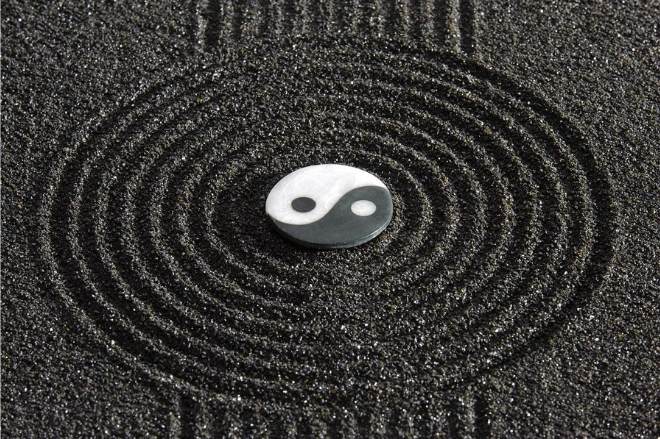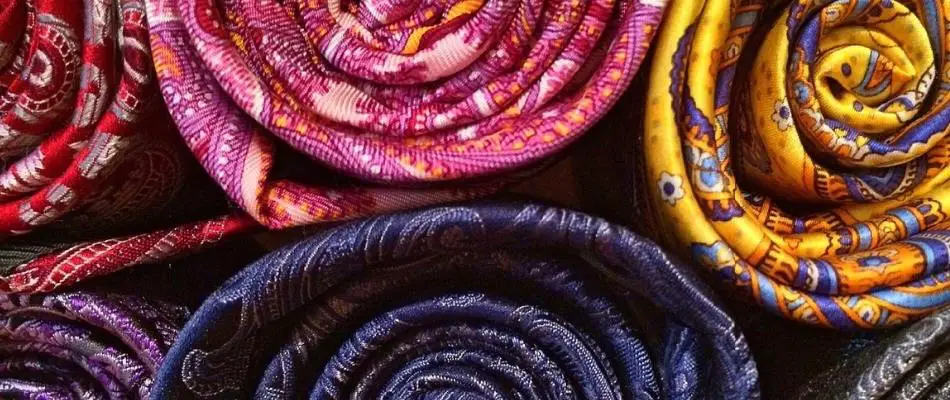What if we put any and all physical activities in a pot and boiled them down to their essence? What would dance, or exercise, weightlifting, or martial arts all have in common? I think their shared foundational movements would look a lot like the medical qi gong set the Eight Pieces of Silk Brocade. Learning these simple movements means you not only have a way of improving any activity that you are interested in, but also have a way to stretch and improve health in general.
The Eight Pieces of Silk Brocade or Ba Duan Jin is a Chinese medical qi gong set documented as early as the 1100s. It is a series of eight stretch-like movements performed in a standing or sitting posture that improves health by focusing on the energy delivered to the major organs and meridians.
Reportedly, there are over 10,000 qi gong sets. So why is the eight pieces of silk brocade one of the most popular? And why has it continued to be preserved and passed down for hundreds of years? This set is the right combination of being simple to learn and providing immediate health benefits.
Add to that and you don’t need a teacher, class, or equipment to benefit from it. With an understanding about what is going on during each of the movements, it can be correctly performed or you can follow along with one of the many eight pieces of silk brocade qigong YouTube videos.
Let’s start with the history of the set, what to focus on while performing it, how to breathe, and then share some good video examples.

A Quick History of The Eight Pieces of Silk Brocade
Like every good piece of Chinese history, the exact roots of the eight pieces of silk brocade are attributed to mythical beings, medical sages, and military heroes. In the first documents where this qi gong set was recorded, it was said to be created by two of the mythical Eight Immortals. In the 1800s it was well documented in medical texts aligning the benefits of the eight pieces of silk brocade with the meridians and organs that are the focus of each movement. And in the same century, General Yue Fei was credited with creating a set of exercises to improve the health of his soldiers.
Identifying the true source would be impossible and I think takes the fun out of it. Here’s what’s important: It’s been taught and shared for 900 years. It was given mythical status meaning that it should be considered greater than human achievement or at least one of the greatest examples of human achievement. Laymen, the medical community, and military community all benefit from it and saw its value. Therefore, you can too!
What Are the Eight Pieces of Silk Brocade (Ba Duan Jin)?
The name for the 8 brocades or Ba Duan Jin is made up of three Chinese characters.
八 or “ba” means 8. Eight is also an extremely lucky number and in this case adds up all of the primary organs and energy centers.
段 or “duan” means sections or pieces. This character is also used in describing written passages or paragraphs so what you should also get from it is that the “pieces,” when combined together, make something greater and complete.
錦 or “jin” refers to brocade. There is a lot of significance in using this term here. A brocade is an extremely intricate piece of woven tapestry that was worn by royalty or the wealthy and usually reserved for special occasions. The fact that this set is most often referred to as the “silk brocade” adds even more significance because it conveys the most exquisite creation made with the finest material. The weaving also alludes to the weaving together of the acupuncture meridians and the way that this qi gong set encompasses all of organs, meridians, and entire body.
So the simple translation of Ba Duan Jin is simply 8 brocades. However, the meaning of Ba Duan Jin would be more like: the most important number of the best movements woven together into a single form, a.k.a tapestry. Sounds a lot better, doesn’t it?
The Eight Pieces of Silk Brocade Qigong Routine
At it’s core, the routine for eight pieces of silk brocade is a series of eight movements that stretches and brings attention to the primary organs and areas of energy. Each posture is performed in a relaxed manner and can be repeated several times. Inhales and exhales are elongated throughout the form which can be performed in a low posture, high posture, or sitting.
| Movement | Purpose and Benefits | |
|---|---|---|
| 1. | Raise Palms to the Heaven | Regulate the three burner energy centers of the torso. |
| 2. | Draw the Bow Aiming at the Raptor | Expand the heart and lungs. |
| 3. | Separate Sky and Earth | Regulate the stomach and spleen. |
| 4. | Turn the Head | Eliminate fatigue. Relax the neck and shoulders. |
| 5. | Swing Head and Tail | Calms the heart and lungs. |
| 6. | Two Hands Hold the Feet | Consolidate energy in kidneys and lower back. |
| 7. | Punch with Wide Open Eyes | Strengthen the liver. |
| 8. | Bounce on Toes to Eliminate Hundred Illnesses | Stimulates lymphatic system to promote recovery. |
Some of the Better Eight Pieces of Silk Brocade Qigong YouTube Examples
There are some really nice examples of the eight pieces of silk brocade on YouTube if you know what to look for. Basically, the best videos show examples from each side and let you know when the inhales and exhales are taking place. These don’t always give you the full teachings though so check them out and then click below to see some inexpensive expert courses that have been put together.
Here is a great eight pieces of silk brocade video with instructor Judy K Young. It is so pleasant to do the movements along with her that memorization really isn’t necessary. Practitioners from around the world have taken the time to translate it into several languages which makes it even more accessible.
I also like this example because it shows the 8 brocades set in a relatively high stable stance and is completed in just a few minutes. For practitioners who have mobility issues, fatigue issues, or are just starting out, they can still get great benefit from doing the form.
Sitting Eight Pieces of Silk Brocade
While the standing version of the eight pieces of silk brocade is more popular today, it’s possible that it was originally a sitting set designed for meditation. Amazingly again! How powerful and versatile is this medical qi gong set that it can be performed sitting? Not only does this make the set possible for people with mobility issues, it is a way for all of us to practice and ramp up our healing after colds, viruses, or if we are nursing a leg or foot injury.
Here is Dr. Yang Jwing-Ming performing the Eight Pieces of Silk Brocade sitting down.
How Do You Breathe During the Eight Brocades?
Breathing during the eight pieces of silk brocade is intended elongate the breath and connect the cycles of inhales and exhales with the movements of the body. As a general rule, when the arms are rising or moving away from the body, inhale. As the hands travel down or towards the body, exhale.
At no point should the breathing be strenuous or take away from the relaxation of the exercise because this would miss the point. Most of us spend our days not focusing on our breath or breathing shallowly due to poor posture or stress. If you are elongating your breath, breathing more deeply, and thinking about your breath mindfully, you are doing a great job.
The Relationship Between Eight Pieces of Silk Brocade and Tai Chi
The silk brocade set is not a tai chi form. If you look at the curriculum of most tai chi class websites you may not see it listed. And yet, most tai chi practitioners have learned this set or have done it before. And, many classes include it as part of their warm up routines. The eight pieces of silk brocade gives tai chi practitioners a way to elongate their breath before doing the form so that the process of doing the form is better.
Secondly, the tai chi form and what is taught in class is usually a mixture of medical and martial focuses. This qi gong set gives us the opportunity to isolate and focus on the just our health and medical aspects of the arts because of the proven benefits. I have been in classes that “jump right into the form” which is fine and fun at times. However, when classes focus on slow movements and correct breathing at the beginning, the forms that everyone does are much, much better with improvements in alignment, stance depth, and breathing.
There is too much good stuff baked into these eight simple movements to not try it. Instructors should teach it and practitioners should add it to their bag of tools to be brought out at the beginning of class, when we are healing, want more energy, or want to improve our form.
Want to Learn the 8 Pieces of Silk Brocade Set?
There are several highly qualified teachers that are now offering their teachings globally thanks to learning platforms that have launched across the past few years. Here are three ways to learn the silk brocade set no matter what physical limitations you may have:
Sitting Eight Brocades Qigong with Dr. Yang, Jwing-Ming
Seated Qigong (energy healing) and Meditation to boost health and immunity with renowned Master Yang, Jwing-Ming (YMAA).
Standing Eight Brocades Qigong with Dr. Yang, Jwing-Ming
In his bestselling qigong lesson, Dr. Yang, Jwing-Ming instructs and demonstrates the 1,000-year-old ”Eight Pieces of Brocade”. These are the most popular sets of Qigong (chi kung) healing exercises and are considered the origin of all energy healing modalities. These gentle breathing, stretching and strengthening movements increase the Qi (energy) and blood circulation in your body, helping to stimulate your immune system, strengthen your internal organs, and give you abundant mental and physical energy.
Secrets of Powerful, Peaceful & Beautiful Wudang Ba Duan Jin
Master Li is a 15th generation disciple of the San Feng Pai – a tai chi family dating back to the founder of Taiji; Zhan San Feng. In his course you will learn the Wudang Tai Chi Bā Duàn Jǐn (八段錦) which is a great form for beginners and is relatively quick to learn.





